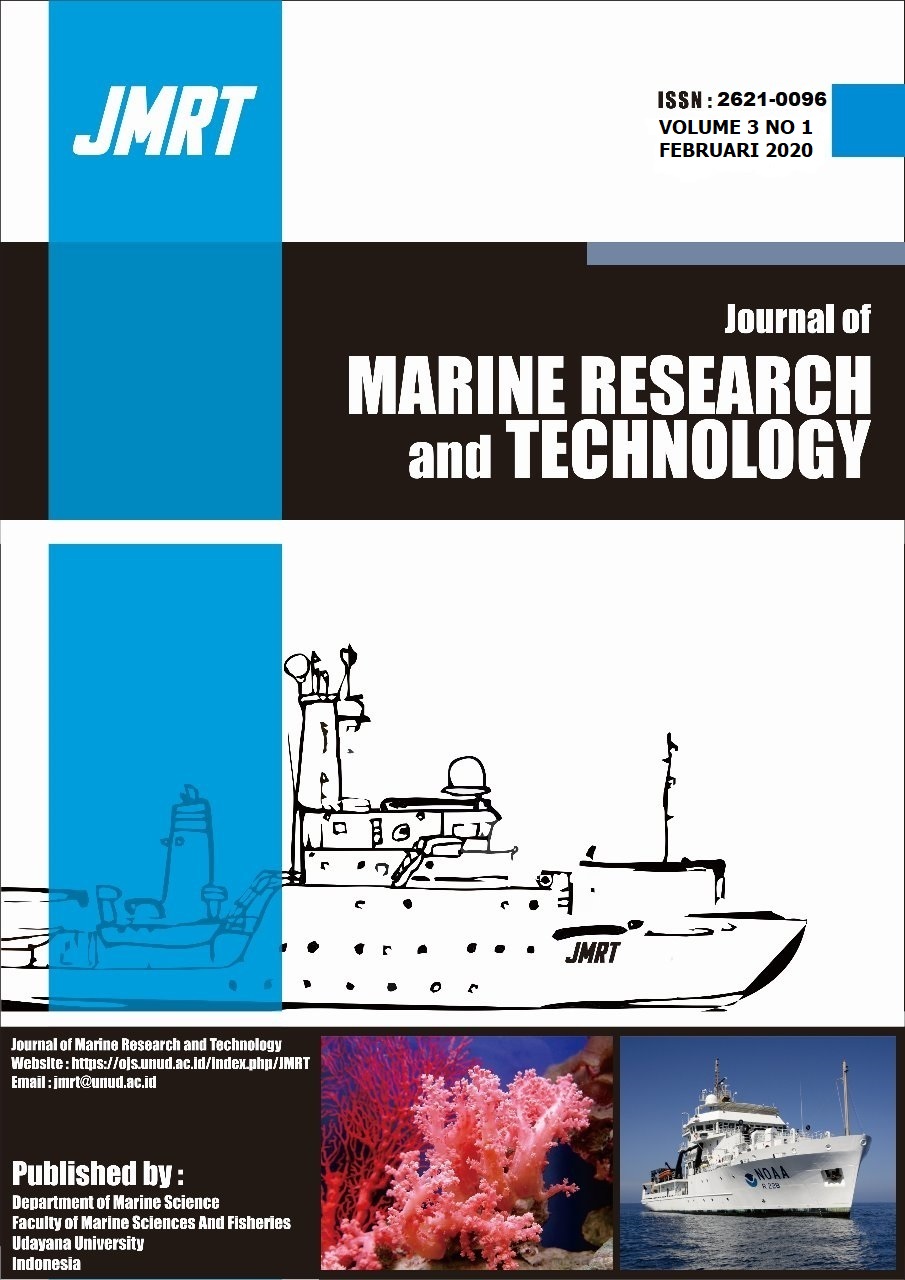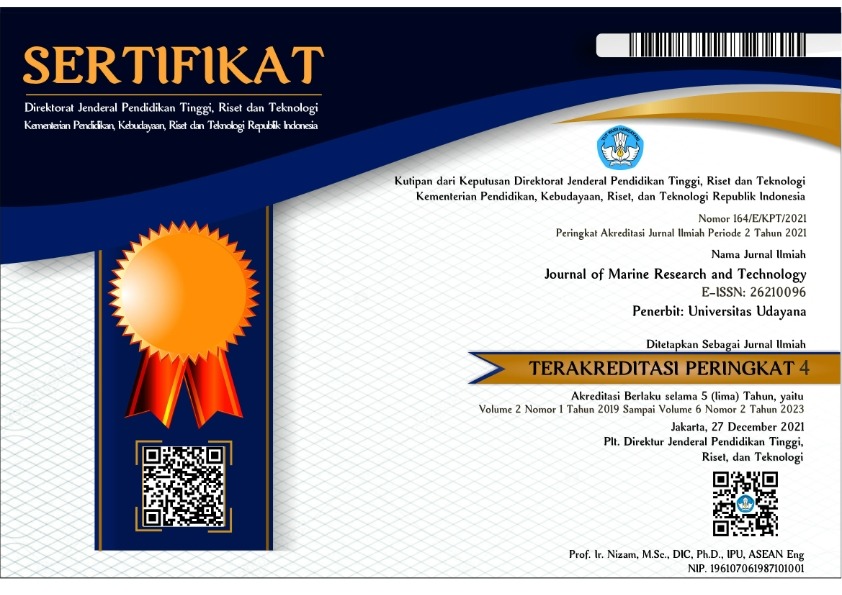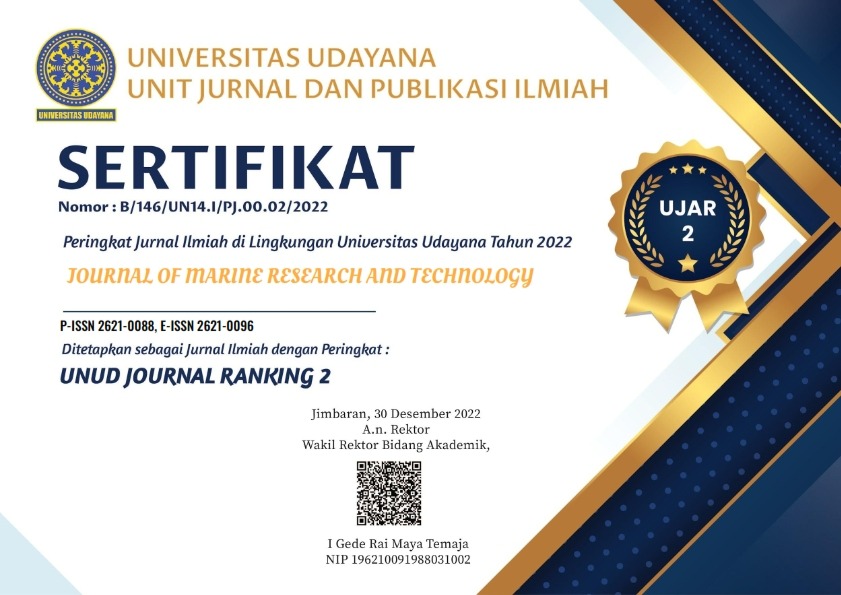Pengaruh Kerapatan Lamun Terhadap Kepadatan Ikan pada Padang Lamun di Perairan Selatan Bali : Studi Kasus Perairan Tanjung Benoa
Seagrass: Fish Abundance: Southern Bali
Abstract
Seagrass had contributed for the life of fish, for instance as a feeding ground, spawning ground, nursery ground, and shelter. Seagrass had a positive correlation against a fish abundance, where diversity and fish abundance were found more associated with seagrass compared on an empty substrate. This research aimed to know the relationship of seagrass density and fish abundance which is important to maintain the long term sustainability of fish in Southern Bali. This research was carried out along Tanjung Benoa and done in four station points started from Tanjung Benoa Beach to Nusa Dua Beach which has characteristic white sandy beaches, big wave beach facing Indian Ocean. Data collection of seagrass used line transect method with 50 x 50 cm2 quadrant and fish sampling used the method of visual censuses in 50 x 5 meters. The analysis of the data used in this study included analysis of seagrass density, fish abundance, linear regression, and statistic test correlation. The results showed the condition of seagrass meadow conditions in Southern Bali that could be categorized very tight. The total range of fish abundance on a 0.18 0.28 – ind/m2 was 10 families of fish, they are Apogonidae, Nemipteridae, Pinguipedidae, Fistularidae, Cepolidae, Labridae, Diodontidae, Pomacentridae, Scorpaenidae, Chaetodontidae, and highest abundance of the family is Apogonidae. A dependent variable (fish abundance) were able to be explained by independent variable (seagrass density) and seagrass density could describe its effects on the fish abundance. The test results of the regression analysis between fish abundance and seagrass density also indicated weak correlation level between the two variables connected.
Downloads
Copyright Notice
The copyright to this article is transferred to Journal of Marine Research and Technology (JMRT). The copyright transfer covers the exclusive right and license to reproduce, publish, distribute and archive the article in all forms and media of expression now known or developed in the future, including reprints, translations, photographic reproductions, microform, electronic form (offline, online) or any other reproductions of similar nature.






